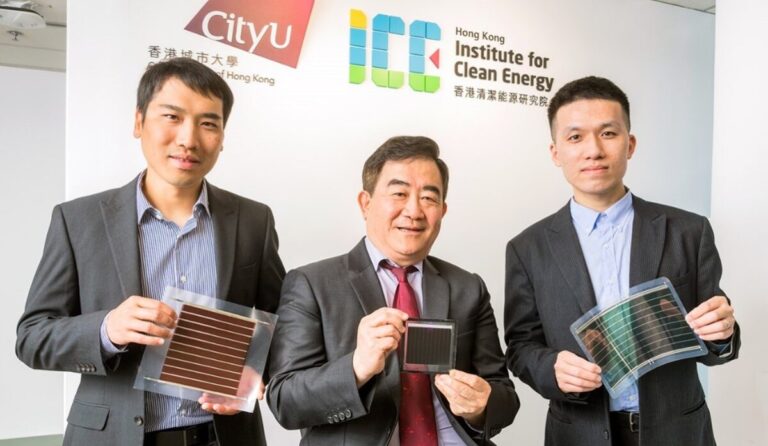Researchers at the City University of Hong Kong have developed a monolithic perovskite-organic tandem solar cell with a wide bandgap subcell that reportedly offers “remarkable” stability. The tandem device achieved one of the highest efficiencies ever reported for this type of solar cell technology.
To overcome operational stability issues of wide bandgap metal halide perovskite cells, a team from the City University of Hong Kong designed a series of ‘multifunctional’ organic redox mediators based on anthraquinone, which were able to ‘selectively reduce iodine and oxidize metallic Pb0 , while simultaneously passively rendering defects through tailored cationic substitution.”
According to the researchers, both the stability and performance of perovskite solar cells that use organic redox mediators based on anthraquinone have improved. The work included a structural analysis and density functional theory calculations on “redox mediator/perovskite interface models to understand the role of AQS derivatives in facilitating the overall redox reaction and perovskite passivation,” as well as to estimate their interactions.
“It was largely in line with what we predicted after our thorough investigation of the underlying mechanism for causing halide segregation in wide bandgap perovskite-based solar cells under the operating conditions,” Alex Jen Kwan-yue, the corresponding author of the research. pv magazine. “After discovering a few possible reasons, we custom-designed suitable redox mediators that can not only stabilize the halide segregation but also passiveize the defects formed during processing and operation. These molecularly engineered molecules have been proven to be highly effective in serving this purpose.”
For the intended perovskite solar cell devices, redox mediator anthraquinone derivatives were added to the perovskite precursor, specifically three compounds known as AQSH, AQSN and AQSP. The resulting energy conversion efficiency was 19.58% at a “high” open circuit voltage of 1.35 V, while the control device had an energy conversion efficiency of 18.68%. The targeted outperformance was mainly attributed to the improved no-load voltage.
These devices retained 95% of their initial efficiency after 500 hours of operation at maximum power. The target short-circuit current density was 17.52 mA/cm2, with a fill factor of 82.74%.
The team then integrated the perovskite solar cell into a monolithic perovskite-organic tandem device with two terminals. The resulting tandem cell achieved a certified efficiency of 24.27%, an open-circuit voltage of 2.151 V, a short-circuit current density of 14.36 mA/cm2 and a fill factor of 81.65%. The long-term operational stability results were “impressive,” the team noted.
The wide bandgap single junction perovskite subcell was fabricated on glass substrates prepatterned with indium tin oxide glass with a p-type self-assembled monolayer (SAM), a perovskite film, and a C60 layer. The composition of the perovskite precursor mainly consisted of (Cs0.2FA0.8Pb(I0.6Br0.4)3) and MAPbCl3.
The organic subcell used in the tandem had an efficiency of 16.62%, an open-circuit voltage of 0.840 V, a short-circuit current density of 26.58 mA/cm2 and a fill factor of 74.43%. It was a single junction molybdenum oxide on indium tin oxide in a pin-like configuration on glass.
“Among tandem solar cells, perovskite-organic variants stand out for their solution processability, highly tunable physicochemical properties and cost-effective raw materials,” says Jen Kwan-yue, explaining the choice of a perovskite-organic solar cell combination. the tandem device. “In addition, their flexibility and transparency open up various innovative applications, such as wearable electronics and building or vehicle integrated PVs. These compelling advantages have driven our focus on perovskite-organic tandem solar cells.”
Looking at upcoming research plans, Jen Kwan-yue said: “Our research group is committed to developing novel redox mediators with enhanced redox capabilities, superior electrical properties and efficient defect passivation. At the same time, we are working to improve the performance of perovskite-organic tandem solar cells through delicate interface engineering and molecular design for low bandgap non-fullerene acceptors.”
A spin-off company, HKTech Solar, will commercialize the technology. According to Jen Kwan-yue, it has attracted “significant funding” from investors and the government to develop PV products.
This content is copyrighted and may not be reused. If you would like to collaborate with us and reuse some of our content, please contact: editors@pv-magazine.com.
Popular content




